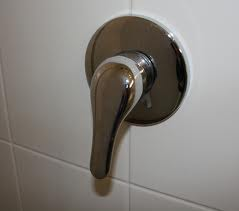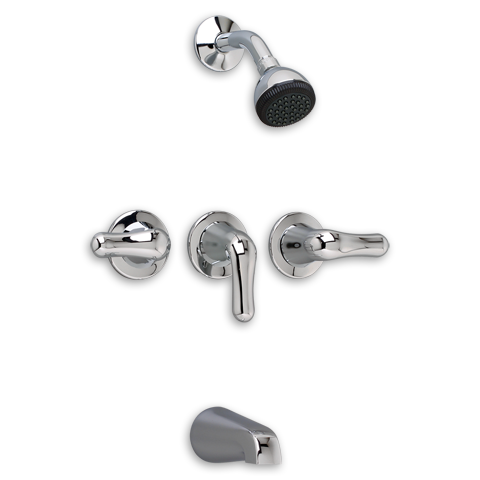I think that the simple shower taps like this:
 or this
or this
work well using the following principles:
To operate:
- Lift to increase flow
- Lower to decrease flow
- Left for hotter
- Right for colder
Advantages:
- You can adjust both flow and temperature with one hand, without looking at the tap
(this not possible with either the two or the three tap systems) - You can shut down the flow, soap your self, then lift to resume the flow without changing its temperature
(this is not possible with the two tap systems)
Possible changes that could be made above this:
a. Limit the maximum temperature to a temperature that won't burn your skin - safer and also enables opening tap at any angle without scolding skin without forcing user to turn tap towards cold first.
b. Limit the angle range according to the temperatures currently possible. (E.g. instead of 45 degrees left for max (safe) temp. to 45 degrees right for min temp., 30 degrees left to 45 degrees right if the water can't reach max temp. right now, or 45 degrees right to 30 degrees left, if the pipes are hot during the summer.) This enables user to always get the water flowing at an expected temperature, no matter what the actual limits are currently. This, however, does raise the following question: If the max. possible temperature goes down while you are showering, should the tap move to the current max. if currently beyond it - probably not, because then if a boiler kicks in and raises the max, your water wouldn't get warm again.
c. Alternatively to b, place a fast responding water temperature control to make the temperature match the angle you set it to even if the initial temperature is currently limited.
For reference:
2 tap system
image http://allgreen.com/site/images/stories/hot_cold_water_faucets
3 tap system
image http://www.americanstandard-us.com/assets/images/productImages/amstd/standard/2184.prd.s.002.png
(source: americanstandard-us.com)
alternative flow and temperature control that requires two hands: image http://www.plumbnation.co.uk/site/roca-thesis-wall-mounted-thermostatic-shower-mixer-tap-1-2---5a1350c00-/shower-mixer.jpg
